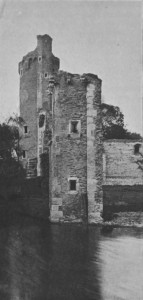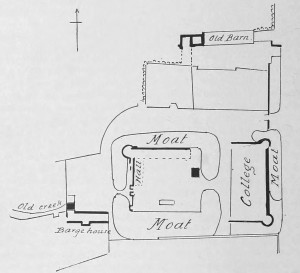Caister Castle was commissioned in 1432 by Sir John Fastolf. The 90 foot tower remains intact and visitors can climb to the top for a magnificent view of the castle ruins and the surrounding area. The castle is of historical interest both because it is one of earliest buildings in England of importance to use brick as the main construction material and because of its connection with Fastolf and later the Paston family.
The Castle is currently home to the largest private collection of motor vehicles in Britain which is housed in a purpose built museum and includes many fine and rare veteran, vintage, classic, sports and touring automobiles and motorcycles.
Within three years Sir John died of the plague in London, aged forty, and the castle deservedly fell to his brother John, who had so bravely defended it. He was made a knight-banneret on the field of Stoke by Henry VII. in 1487, and died in 1503, being followed in the property by his son William, aged twenty-three, who was knighted by Henry VIII., whom he accompanied to the Field of the Cloth of Gold, dying in 1554. His son, Sir Clement Paston, built a new and grand mansion at Oxnead, and removed thither from Caister ; he died s.p., and his heir continued to live at Oxnead, and in 1600 abandoned Caister Castle. In 1660, Sir William Paston, being embarrassed for £6500, owing to a citizen, William Crow, of London, parted with the castle and its lordships and manors to this man, under whom it sank into ruin. His descendants were made Earls of Yarmouth in 1679, but the family became extinct in 1732. Caister afterwards became the property of one of the Gurney families.
The ruins of this old abode, like those of its church, have been converted into farm premises. The whole limit of its walls enclosed 6 acres, the chief part forming a quadrangle, of which the N. and ‘W. sides remain tolerably perfect. This is enclosed with a broad moat, crossing which on the E. you entered a rectangular enclosure, called the college, built on three sides of a square, the outer walls of which partly remain, with the foundations of a round tower at the N.E. and S.E. ends ; it was moated also, and a portion remains under the E. front wall, which is furnished with loops. This building contained the college and chantry, founded by Sir John Fastolf. The grand entrance was over a draw¬bridge on the W. side; on the left of this, on entering, was the great Hall, of which the six double windows remain ; it was 59 feet long by 28 wide, and at the end of it, at the N.W. angle, is a lofty and graceful round tower, 25 feet in diameter and 90 feet high, in five storeys, supported by an hexagonal turret on the left side, which contained a fine flight of stone stairs to the top ; these stairs were carried away by a clergyman for use at a new house at Wroxham for the Trafford family, so it is not possible now to ascend the tower. Adjoining the tower is the dining-room, the fireplace of which is still to be seen.
On the S.W. is a large outbuilding which has a tower, and near it a large archway in the basement spanning a small creek, now tilled up, which com¬municated with the sea, and by which barges could be received ; this is called the barge-house.
The whole W. front of the castle is heavily machicolated, but the battlements have disappeared. The building contained twenty-six chambers beside the State apartments, the chapel, and the offices. N.E. of it is an ancient barn coeval with the castle. (Castles Of England, Sir James D. Mackenzie, 1896)


Leave a Reply